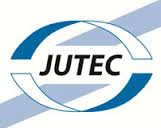EN ISO 11612 is a European standard that pertains to protective clothing designed to protect the wearer from heat and flames. The standard is titled “Protective clothing – Clothing to protect against heat and flame” and falls under the category of personal protective equipment (PPE). EN ISO 11612 specifies the requirements and testing methods for clothing that is intended to provide protection against various levels of heat and flame exposure.
The standard covers clothing that is used in a variety of industrial settings where workers might be exposed to potential hazards such as flames, radiant heat, convective heat, molten metal splashes, and contact heat. The main purpose of this standard is to ensure that the protective clothing effectively minimizes the risk of burns and injuries that can result from exposure to heat and flames.
EN ISO 11612 categorizes protective clothing into different performance levels based on its ability to resist heat and flame exposure. The standard specifies the requirements for each level, covering aspects like flame spread, convective and radiant heat resistance, and resistance to molten metal splashes.
The main parameters covered by EN ISO 11612 include:
- A: Limited Flame Spread – This parameter measures the clothing’s ability to resist the spread of flames across its surface.
- B: Convective Heat Resistance – This parameter indicates the clothing’s ability to protect against heat transmitted through convection, such as exposure to hot air.
- C: Radiant Heat Resistance – This parameter measures the clothing’s ability to protect against radiant heat, such as heat radiating from flames.
- D: Molten Aluminum Splash Resistance – This parameter assesses the clothing’s ability to resist molten aluminum splashes.
- E: Molten Iron Splash Resistance – This parameter assesses the clothing’s ability to resist molten iron splashes.
- F: Contact Heat Resistance – This parameter measures the clothing’s ability to protect against contact with heated surfaces.
Manufacturers use these codes to indicate the protective properties of their garments. For example, a garment that is designed to offer protection against flame spread, convective and radiant heat, and molten metal splashes might be labeled with the code A1, B1, C1, E1.
As standards can change and evolve, it’s important to refer to the most recent version of EN ISO 11612 or any updates to ensure accurate and current information.
 3M
3M Ansell
Ansell Dellta Plus
Dellta Plus Drager
Drager edelrid
edelrid Honeywell
Honeywell JUTEC
JUTEC lakeland
lakeland MSA
MSA Cerdo nuevo
Cerdo nuevo Weldas
Weldas